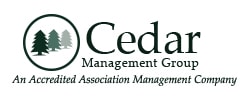An organization’s governing documents are the backbone of an entity’s structure, rules, and procedures. Without these essential documents, an organization would lack the framework to address issues systematically. All members should understand what these documents entail and how they affect every individual and the association as a whole.
What Are Organization Governing Documents?
An organization’s governing documents dictate its structure, procedures, and rules. Without these documents, an organization would have nowhere to turn when faced with problems or issues; instead, it would constantly rely on the decisions of the majority, which would quickly unravel the delicate order of the organization. With organization governing documents, the company can protect member rights, including those of the minority.
The Types of Organization Governing Documents
Organizations share four general documents: the corporate charter, the constitution and bylaws, the rules of order, and the standing rules. Let’s dissect each one below.
1. Corporate Charter
To function as a corporation, an organization must seek corporate status from the state or federal government by obtaining a corporate charter. This document establishes essential details such as the organization’s legal name, address, and purpose.
Incorporation with the state is crucial for an organization to engage in various legal activities. These activities include property ownership, contract binding, legal actions, and protection against personal liabilities for members performing duties. Additionally, incorporation provides a recognized legal status, the ability to own a corporate seal, and ensures perpetual continuation as an organization.
The organization should engage a local attorney familiar with state laws to initiate the incorporation process. The attorney will draft the incorporation papers, including information like the organization’s name, headquarters, purpose, and provisions for potential amendments. Based on legal advice, other details, such as the number of yearly meetings, designation of a board of directors, nonprofit or for-profit status, authorized real estate holdings, and the term of existence, may also be included.
Once the final draft is ready, members sign the document, which the organization submits to the secretary of state. Some states may require additional documents like for-profit or nonprofit bylaws. The final document is the Articles of Incorporation, Certificate of Incorporation, or Articles of Association. This document is legally binding and takes precedence over other organizational documents.
After incorporation, it is essential to keep the corporate charter accessible and regularly refer to it when proposing changes to other governing documents. This ensures alignment and prevents conflicts between the corporate charter and subsequent organizational rules.
2. Constitution and Bylaws
The constitution or bylaws contain the rules governing an organization. This document focuses on the internal structure of the organization rather than parliamentary procedures. The bylaws outline the organization’s fundamental attributes, its operational guidelines, and the relationship between the assembly and individual members within the larger organizational framework. These rules are crucial, requiring prior notice and a significant majority for any amendments.
3. Rules of Order
Organizations are advised to adopt a parliamentary authority, like Robert’s Rules of Order, but may choose to deviate from its recommendations in certain aspects. This is where the rules of the order come into play. These rules address the orderly conduct of business and the duties of officers. They encompass unique ceremonial procedures, varied meeting orders, election rules, or accommodations for electronic formats.
Organizations turn to rules of order when they want to implement procedures distinct from parliamentary authority. However, it is crucial that any adopted rules align with common parliamentary law. This ensures the protection of the rights of minority and absent members. That said, this document does not need to include common parliamentary rules.
If an organization includes rules of order in its bylaws, it’s worth noting that they are subject to suspension. However, members may not suspend other bylaws that govern the organization’s structure unless the bylaws expressly permit it.
4. Standing Rules
Standing rules govern an organization’s administration. They are established through main motions and persist until amended or rescinded. Typically, they address matters like meeting times. Adoption occurs via a majority vote, with potential suspension of a meeting through a majority vote and rescission by a two-thirds vote without notice or a majority vote with notice. An organization keeps a record of these rules in a “Standing Rules” book to ensure continuity and help guide new leaders and members.
If an organization follows certain practices because of tradition, it’s important to clarify these customs. Whether written or customary, a formal motion is necessary to rescind a custom, treating it as if the assembly enacted it. Organizations may use terms like “Guidelines” or “Policy Statements” instead of “Standing Rules.”
Rules of order require a two-thirds vote for suspension and a two-thirds vote with notice for changes. On the other hand, standing rules can be suspended by a majority vote for a meeting, while rescinding them requires a two-thirds vote without notice or a majority vote with notice.
A Deep Dive Into Association Bylaws
An organization’s bylaws include its name, object or purpose, members, officers, meetings, executive board, committees, parliamentary authority, and amendments. Depending on their size and nature, some organizations may need to include other information.
1. Organization Name
An incorporated organization’s name should not be included in the bylaws, even if the constitution already contains it. This prevents potential conflict between two or more documents.
2. Object or Purpose
Like the name, an incorporated organization whose corporation papers contain its object should not list the same in its bylaws. The object or purpose should be succinct, often only a sentence or separated by semicolons (if long). The object sets a boundary on what members can introduce to the assembly.
3. Members
This section sets forth the responsibilities, requirements, and rights of members. It outlines all pertinent information regarding members, such as the classes of members, eligibility for membership, dues or fees (if any), disciplinary procedures, retention, and resignation.
4. Officers
This section lists the names of officers in order of ranking. It also includes information on nomination and elections, such as requirements and procedures. Other information should dictate eligibility for office, terms of office, removal from office, and vacancies.
5. Meetings
The meetings section should discuss when meetings must occur, quorum requirements, requirements for calling special meetings, how to cancel regular meetings and information on electronic meetings. Do note that most of the membership constitutes a quorum if the bylaws don’t provide for it.
6. Executive Board
This section addresses board composition (the number and procedure for filling positions), board meeting information, how to remove officers, and how to deal with vacancies. It should also dictate the duties of board members. Keep in mind that members can’t rescind duties that the bylaws specifically give to board members.
7. Committees
The bylaws should list down all standing committees. This section should also dictate the number of members per committee, committee duties, terms of office, and eligibility requirements. Other information should include how committees are formed, who fills vacancies, how committees can spend funds, how members may resign, and other requirements.
8. Parliamentary Authority
This section details which parliamentary authority and edition the organization adheres to.
9. Amendments
This section should outline the procedures and requirements for amending the bylaws. Amendments should come with previous notice and a two-thirds vote.
Tips When Crafting Bylaws
The bylaws play an essential role within the organization’s governing documents. When writing bylaws, though, it is easy to make mistakes that can derail the structure and processes of the organization as a whole. Fortunately, there are some tips an organization may utilize when creating its bylaws.
- Include a dissolution clause that dictates what happens should the organization dissolve.
- Write in an indemnity clause what state laws may mandate for nonprofit organizations.
- Use simple and straightforward language.
- Avoid using duplicate words or legal jargon.
- Write provisions so no one may take them out of context when quoted.
- Construct complete sentences that don’t rely on those before or after them to convey meaning.
- New organizations should have fairly simple bylaws, only writing the necessary information to start operations. Amending bylaws will come along the way as new experiences and issues come to light. Don’t try to predict the future; cover all possible scenarios.
- Review the bylaws regularly to identify outdated provisions and formulate new, necessary ones.
- Hire an attorney or parliamentarian to assist with writing bylaws.
The Bottom Line
Organizational governing documents are integral to the success of any entity. Each document plays a distinct role, ranging from defining legal status to setting internal rules and procedures. Crafting, reviewing, amending, and interpreting these documents, though, does not always come easily.
RELATED ARTICLES:
- What Are The HOA Governing Documents You Need As A Homeowner?
- How The Corporate Transparency Act Applies To HOAs
- What Are Robert’s Rules Of Order? How Can These Rules Help HOAs?






